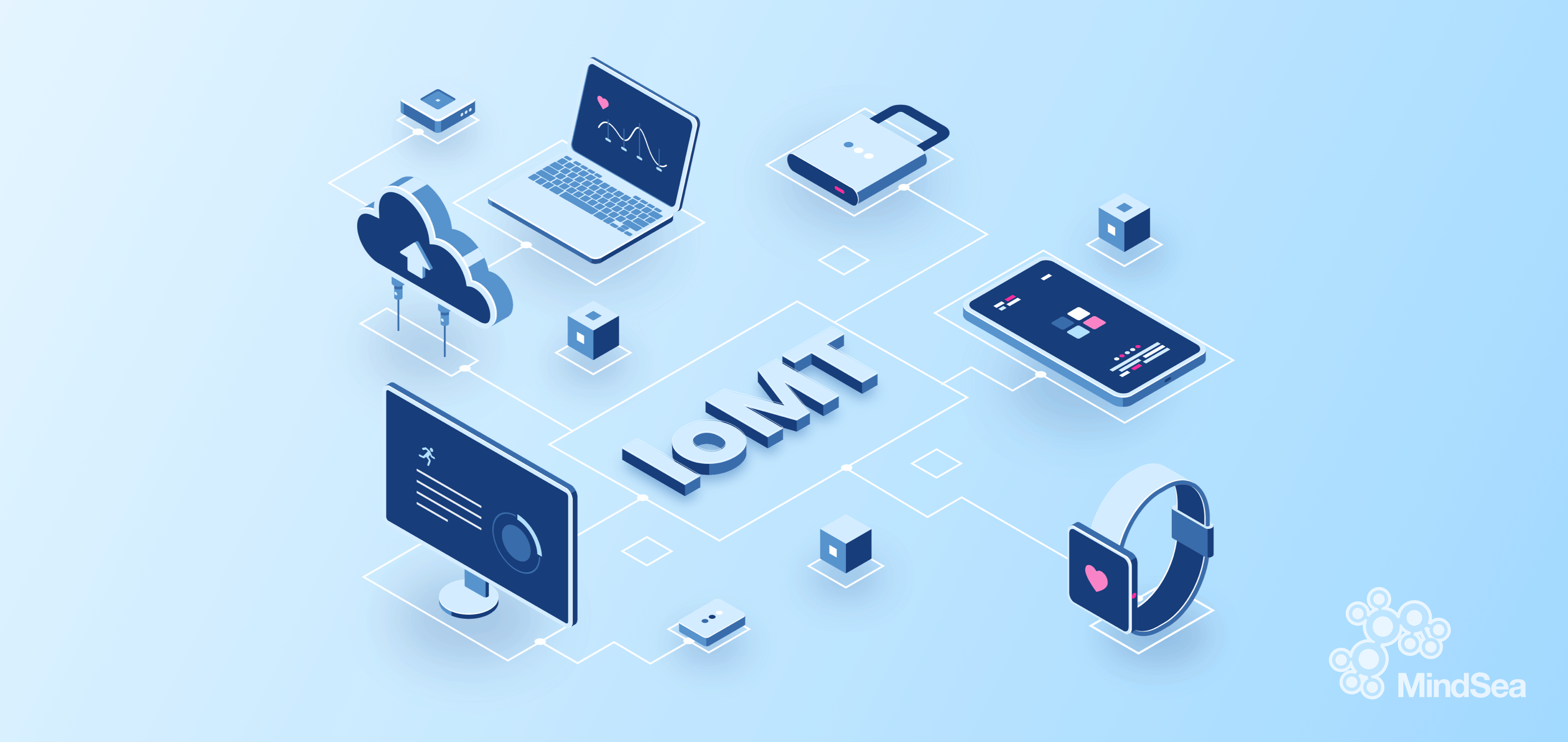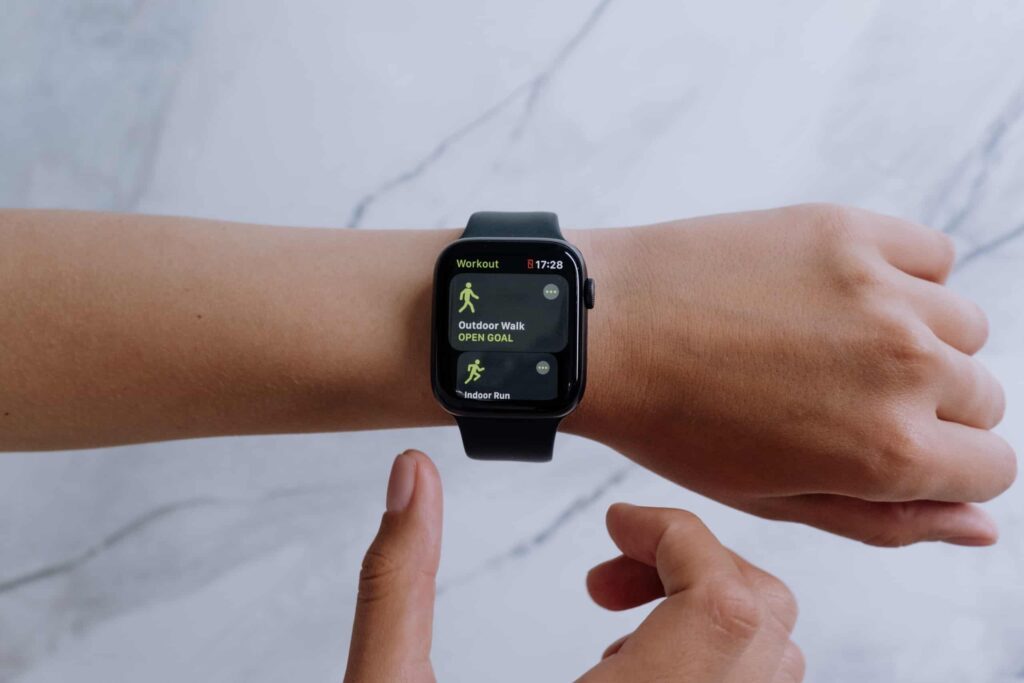The past several months have catalyzed the growth of mHealth. Standing out above the pack is mobile technology that relies on contact tracing and other connectivity features.
In today’s world, being connected and keeping a distance both play important roles in healthcare. Thankfully, with the design and capabilities of smartphones growing more sophisticated by the year, there are a variety of options for mhealth app developers to make connectivity a priority.
Some of these features, like cellular and bluetooth, are common terms for the average user, but folks may not realize the full potential these features hold for enhancing the delivery of care.
This article digs deeper into the many ways connectivity can be brought into mobile products. But first, let’s understand the role connected devices play in healthcare.
What are IoT and IoMT?
The adoption of connected devices in the healthcare industry has led to technological advances, IT collaborations, and increased investment by governments and private companies. These are an important part of the growing Internet of Things (IoT) – along with its subset Internet of Medical Things (IoMT).
Let us break the two of these down further:
IoT
IoT describes the totality of the multiple interconnections of smart devices with each other, and with the applications and networks with which they interact. It functions to simplify, improve, automate and control tasks with minimal human interaction. A wide range of interconnected objects and devices now harvest data through sensors, analyze that data, and actuate processes in the physical world.
IoMT
IoMT is a subset of the IoT that focuses on the connected infrastructure of medical devices, applications, and health systems and services. It includes a wide range of interconnected objects and devices that harvest information from the environment through sensors, analyze it, and act back on the physical world.
The Difference Between Fitness and Medical Devices
Wearables are worn devices that combine miniaturized sensors and communications. They may be attached anywhere on the body, or implanted, or even ingested. Just as the microscope and the telescope extend the capabilities of the human eye, external devices of all kinds significantly extend the kinds of data that can be transferred for software processing. Mobile apps further allow for interoperability across multiple, and mobile, geolocations.
There is a distinction between fitness devices and stricter medical devices. This distinction places some of the most well-known wearables in the IoT category, but not necessarily the IoMT.
Fitness Devices
Fitness trackers, like those included in various smart watches, are intended to improve health by tracking and rewarding changes in personal wellness regimens, but they are not normally classified as medical devices.
That’s why companies like Apple, Fitbit, and Samsung must point out that they are not professional diagnostic tools, but consumer aids.
Medical devices, on the other hand, integrate into larger networks and systems.
Medical Devices
Medical devices (like blood pressure monitors, X-Ray machines, smart pills, infusion pumps, pacemakers) are intended to diagnose, prevent, cure or mitigate disease or abnormal physical condition, and are regulated as such by the FDA (US) and TPD (Canada).
As artificial intelligence advancements are implemented, better remote measurement, analysis, and integration of health-related data are becoming realities. These are still evolving and partially connected networks. This is done with shifting and sometimes conflicting standards, protocols, and security strategies regarding privacy, data integrity, confidentiality and authentication.
What They Each Bring to Healthcare
The Covid-19 pandemic has accelerated the demand for secure, contactless/remote health strategies and intelligent, integrated systems for communication, automation, and medical technologies.
Apple and Google have already joined forces and released interoperable APIs (Application Programming Interfaces) for Android and iOS devices for use by public health authorities. For the next phase, they agree that a Bluetooth-based contact tracing platform would not only be a more robust solution, but would also allow for more people to opt-in to larger analytical ecosystems.
The image below demonstrates solution architecture. This explains the sequence of steps app designers go through when working with healthcare API management platforms.
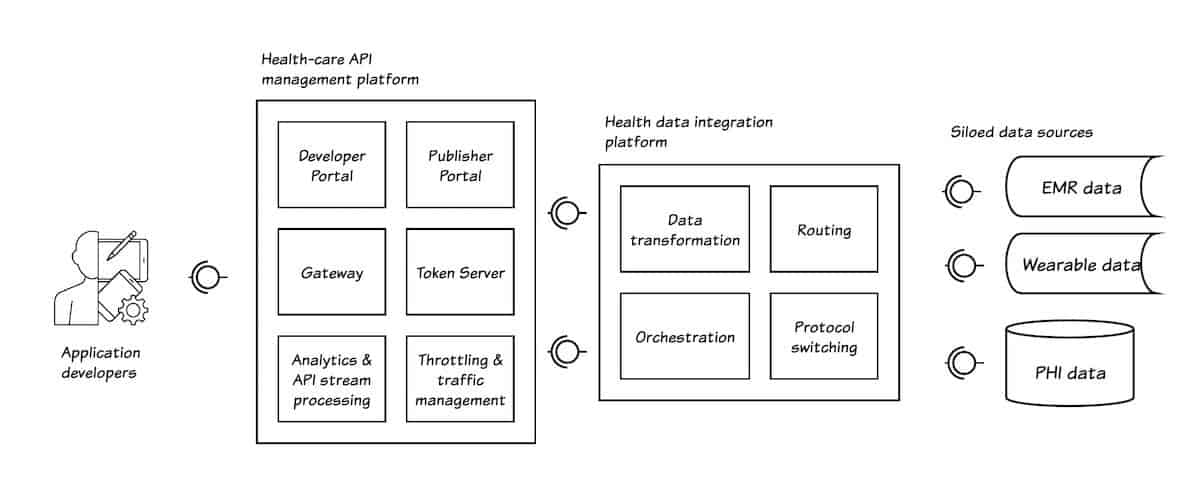
This process brings more detail into how to integrate better connectivity into your processes and product(s).
From the perspective of mobile app development, an overview of the different kinds of connectivity between external devices and smartphones provides different contexts for potential new capabilities.
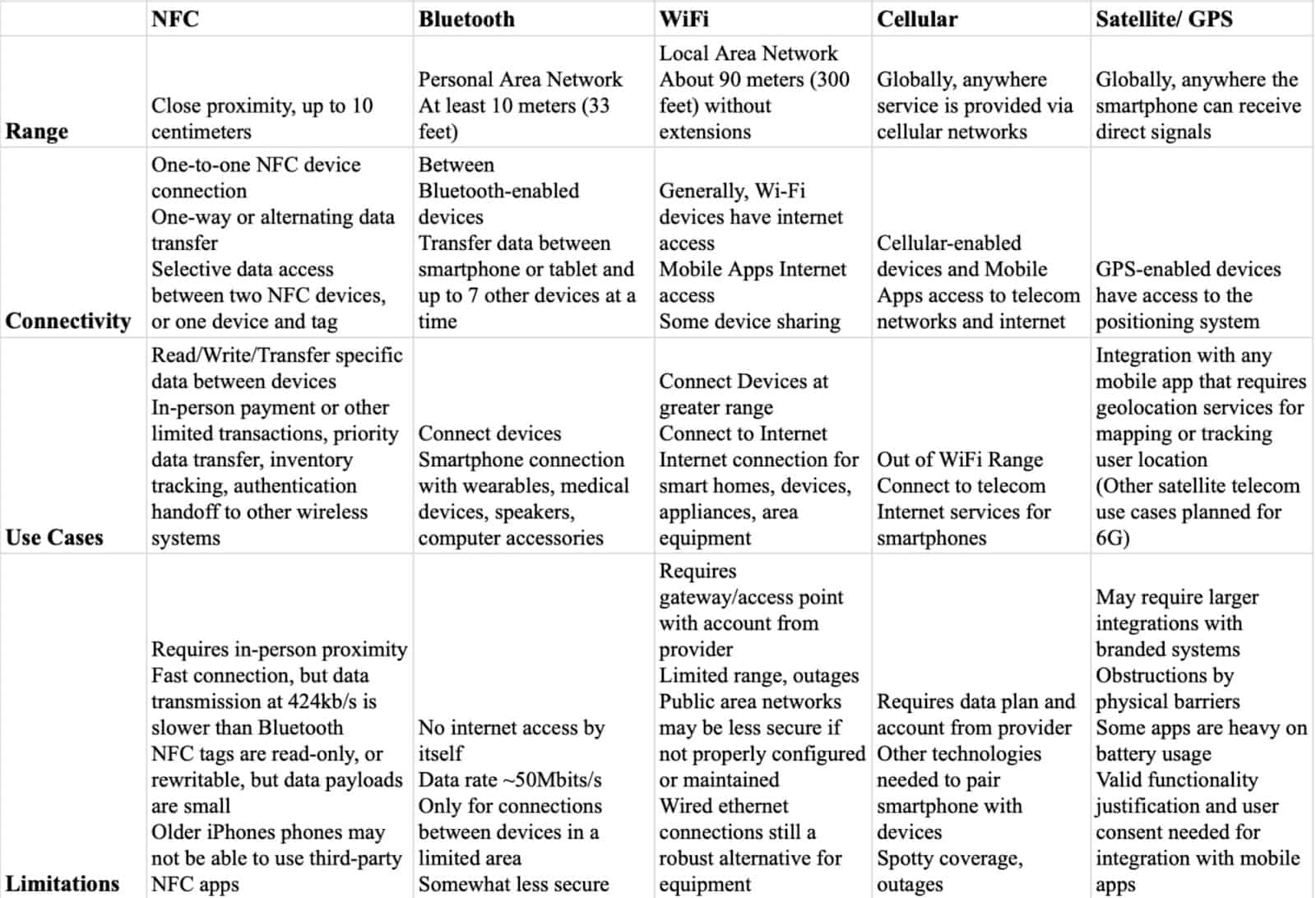
As you can see, while wireless brings lots of benefits, there are still limitations.
At the closest range, wired options still exist. Smartphones do not have Ethernet ports, but some stationary devices and equipment continue to utilize the wired networks. This is most common in secure areas that require the stability that wired connections, like ethernet, offers.
A direct wired connection between an external device and a smartphone is possible for many types of gadgets, but the port may be incompatible. Android devices use standard USB ports, while iPhones use their proprietary Lightning port.
Achieving Meaningful Connectivity with NFC
At the next level of range, between a couple of millimeters and a few centimeters, Near Field Communication (NFC) provides an almost instantaneous one-to-one link between initiator and target devices using electromagnetic induction. The maximum data transfer rate is 424 kbits/s, so it’s not ideal for large data exchanges. No need to touch!
You may be familiar with the characteristic “tap” gesture, but no actual contact is required for NFC to activate. A nearby “hover” will couple the devices, like two magnets. Apple Pay, Google Pay, Android Pay, and Samsung Pay all use NFC for mobile payments. Perhaps you have used NFC to check-in, make a point-of-sale purchase, obtain in-store coupons, learn more about an exhibit, or exchange contact information; these quick in-person transactions have been the primary way the contemporary consumer has utilized NFC capabilities to date. This is particularly the case as contactless behavior has been prioritized thanks to the Covid-19 pandemic.
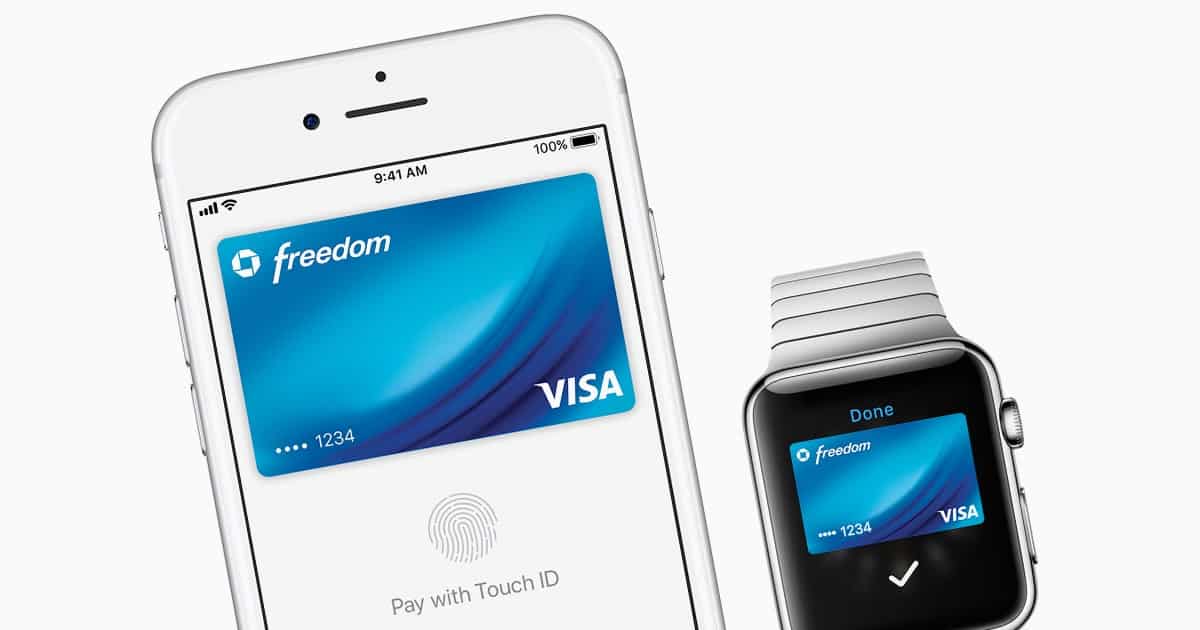
One interesting application of NFC is as a bridging authentication method before other wireless protocols take over data transfer at higher transfer rates.
NFC-enabled Bluetooth devices pair automatically with the smartphone, and can handoff to Bluetooth without any of the often clunky pairing difficulties of Bluetooth alone.
Implanted or ingested sensor devices using NFC may present biocompatibility challenges, but they don’t necessarily require a battery or electrical connections. Since NFC works as a radio wave coupling between inductors, devices don’t require their own power supply and can be powered by the electromagnetic field produced by an active NFC component when it comes into range.
Two NFC-capable devices are needed for typically meaningful two-way functionality. That said, since the passive form of NFC acts like any other radio-frequency identification (RFID) tag, it is an alternative to bar codes for high value chain-of-custody items like blood, vaccines, prescription drugs, or equipment. Barcode systems are unidirectional, but encrypted NFC tags can be revised and updated in read/write modes.
Although iOS has had a history of being more restrictive than its competitors, developer information for NFC-enabled mobile apps is available from both Android and Apple developers. a iOS also restricts access to the NFC chips themselves.
The simple exchange between initiator and target device roles requires neither special user training nor pairing procedures. NFC chips can even be programmed to perform simple tasks upon scanning; for example, patients could signal arrival for check-in, or be connected to nearby systems. There are a variety of ways to use this method of connectivity, and it’s this versatility approach that plays into its popularity on a consumer level.
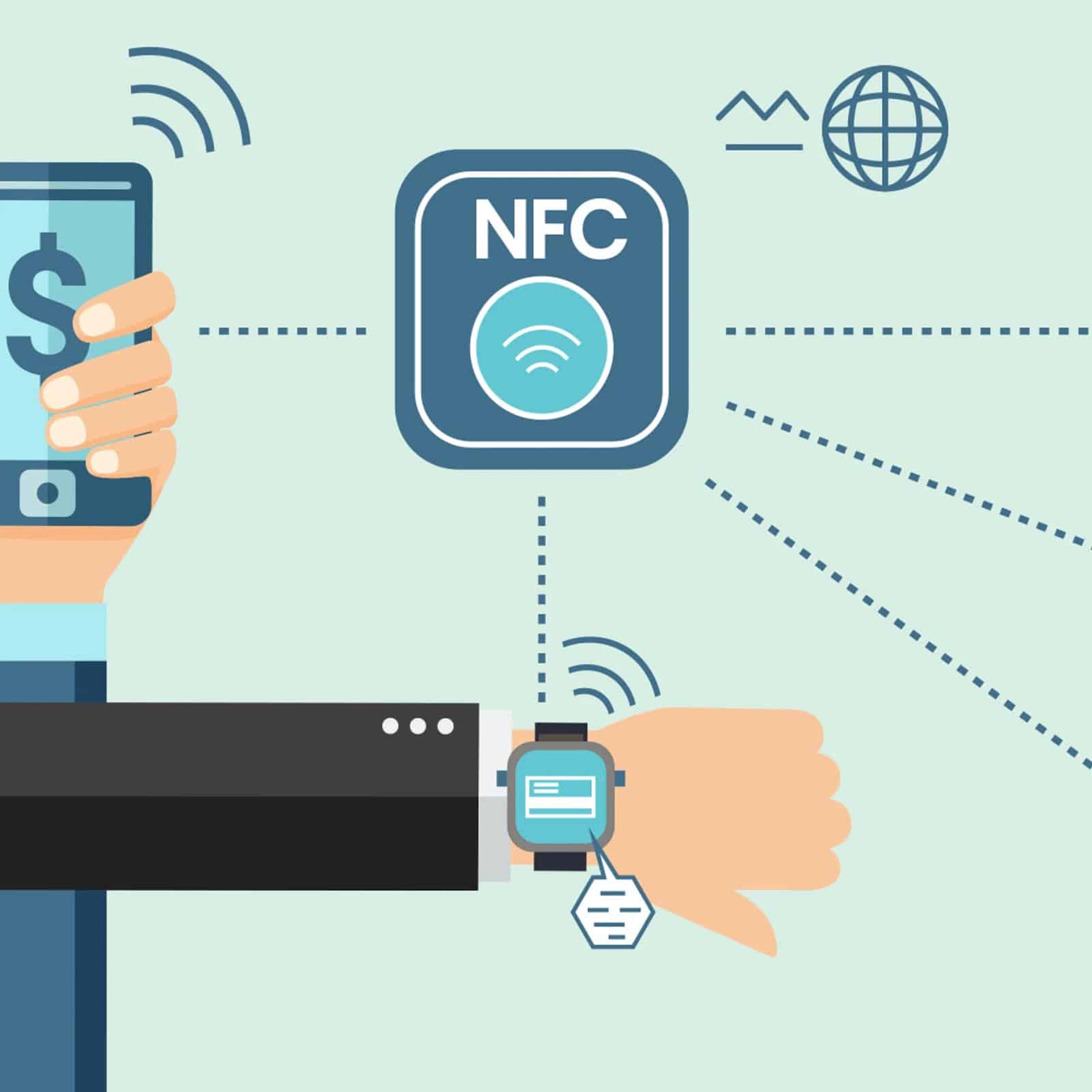
An ID bracelet that records and displays patient care updates during a hospital visit not only ensures the specificity of information for the particular patient, but also saves time, reduces errors, and improves services. In emergency situations, a patient’s pertinent health information could be easily transferred to first responders.
With a little more patient interaction, data from smart medical devices (like a sphygmomanometer or electrocardiograph) could be collected by an app on the patient’s smartphone, then transferred via NFC to the hospital database, under the patient’s own medical record. Though some older phones, especially iPhones, may have restrictions on NFC use, or lack it altogether, all of this simplifies the secure communication of content between patients, providers, and organizations.
The Household Name for Wireless Connections
Bluetooth is a wireless communication technology standard used for exchanging data across short distances, such as within a home or office. Most users know it from pairing devices like wireless headphones to their mobile devices.
Bluetooth is designed primarily for communicating over distances of less than 10 meters (33 feet), but the effective range can be extended. Using one of several methods of frequency hopping and slave-master packet architecture, Bluetooth uses UHF radio waves (2.400-2.4835 GHz) to a maximum data transfer speed of about 24 Mbps; and it does sousing Radio Frequency Communications (RFCOMM) and/or other discovery and communication protocols.
Bluetooth supports connections between the smartphone and multiple external devices, unlike the NFC one-to-one pairing. When in discoverable mode, Bluetooth devices will transmit the device name, class, list of services, and other technical information. To avoid repeating the pairing sequence, the user can allow a persistent pairing bond.
Did you know that the Bluetooth logo consists of a combined rune of King Harold “Bluetooth” Gormsson’s initials (H (ᚼ) and B (ᛒ)?
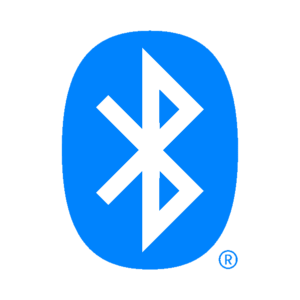
Much as the ancient King united Denmark and Norway into Scandinavia, the industry leaders behind Bluetooth intended “to unite the PC and cellular industries with a short-range wireless link.” “Bluetooth,” initially the internal code name for the project, stuck, but another early possibility – PAN (personal area network) – is descriptive of its niche.
New Bluetooth-enabled devices appear every day. They’ve not only changed the lives of consumers, but have also had a profound impact in the health space since they can transmit every reading to a monitor, phone, or computer to reduce errors and allow greater focus on patient care.
Bluetooth Health Device profiles for standardized data types by specialization are specified by the Institute of Electrical and Electronic Engineers. Examples of these include:
- Glucose Meter
- Body Thermometer
- Blood Pressure Monitor
- Fall Sensor, Medication Monitor,
- Power Status Monitor
While scent and taste have yet to find their digital forms, the sound processors of some hearing aids and cochlear implants can act as Bluetooth wireless headsets by connecting with direct audio inputs from phones or televisions.
The Abbott Gallant, a biventricular implantable cardiac defibrillator, uses two-way authentication for Bluetooth to connect to the smartphone rather than a bedside monitor to improve monitoring and patient engagement.

The Stentrode BCI neuroprosthesis redirects brain impulses so that severely paralyzed patients can control devices. Unlike other neural interface devices, the Stentrode does not require open brain surgery. It works in conjunction with an eye-tracker, but without touchscreen, mouse, keyboard or voice activation.
At least one E-skin sensor system can run on sweat, and analyze it, too.
Bluetooth doesn’t have the range or speed of data transfer that WiFi offers, but it consumes less power and tends to be simpler to use. Moreover, Bluetooth is almost universally available on smartphones/tablets, and it is widely accepted by providers, administrators, and patients.
Where only moderate bandwidth is required, or a bridge is needed between devices or networks in a specific area, Bluetooth fills the gap.
Keeping Us Connected From Home
While Bluetooth shares information between devices, Wireless Fidelity (WiFi) connects many devices into a local home network so that they can both communicate with one another and obtain wireless access to the Internet. Of course, a “home network” doesn’t require a house—Wi-Fi access points are found in other settings too, like restaurants, airports, hotels, and offices.
WiFi requires a wireless gateway (modem plus router/access point) to connect to an internet service provider and then broadcast the radio signals of your WiFi network. The local network is named, and has a Service Set Identifier (SSID) and a wireless security standard (i.e., WPA2) with which your network password will work. Often the default SSID and security key are bar coded on the physical gateway device, but these can be changed.
Wireless extenders, repeaters, and mesh systems can help boost WiFi coverage and improve the signal, especially in areas with obstructions or where there is more than a few hundred feet of separation from the gateway device. WiFi standards specify a wide range of theoretical vs. actual data transfer speeds. Wi-Fi 6 (802.11ax) promises to improve average speed 4x, especially in crowded spaces.
WiFi signals can also be broadcast with portable WiFi hotspots or a cellular modem, but cellular usage requires the combination of data plans and cell phone towers instead of a local gateway device.

Consumers or businesses with local WiFi have the significant advantage of accessing the internet on their smartphones without having to pay the cellular charges that can accrue outside its range.
How Cellular Changed Mobile Phones
There would be no smartphone at all without the founding connection of the sophisticated two-way radio capability enabled by Cellular networks.
Cellular networks are maintained by private providers (AT&T, T-Mobile, Sprint, Verizon, etc.), enabling phone-to-phone communications as well as access to the internet. All mobile apps must use cellular services, but they may also be used on WiFi networks.
The first generation cellular network (1G) was launched in 1979. Subsequent 2, 3, LTE, 4, 5 (and now looming 6G) networks have improved data speeds and reliability and lowered end-to-end latency.
Only the last link, between cellular towers and the smartphone, is wireless. Networks of voice/database station transceivers are distributed over “cells” (land areas). Large areas are split into smaller cells to support heavy local use. Small cells have less coverage than base stations, but are intended to fill gaps in cellular coverage areas. The smallest range of the smallest cell – the attocell – is less than 4 meters (13 feet).
Smartphones connect to a cellular network as an uplink to the radio base station in a cell, which connects to a mobile switching center, which connects to a public switched telephone network. The process back out to the smartphone is the downlink.
Neighboring cells have cell towers using different frequencies to reduce interference. As the mobile phone travels, the network will switch between available frequency channels for the signal, and hand off the call from cell to cell base stations. This enables mobile apps to continue to function while the user is travelling.
Keeping Us in the Right Direction
At the furthest distance from a smartphone, global navigation satellite systems – primarily the U.S. Global Positioning System (GPS) – provide geolocation and time information to GPS receivers.
The smartphone receives signals via the GPS antenna and calculates a trilateration between satellites to estimate the current location of the phone. Basically, it draws spheres around three satellites it locates, and finds the intersection on the ground, adjusting for time.
A GPS receiver must have a clear line of sight to the satellites to work, so physical barriers like dense tree cover and buildings can keep it from maintaining a fix on your location.
Unaugmented GPS can be off by as much as several meters. Most smartphones have the capability to boost accuracy and coverage by combining GPS signals with other data, like cell signal strength, WiFi, and/or Bluetooth beacons. In addition, specific APIs for developers can integrate and expand hybrid functionality.
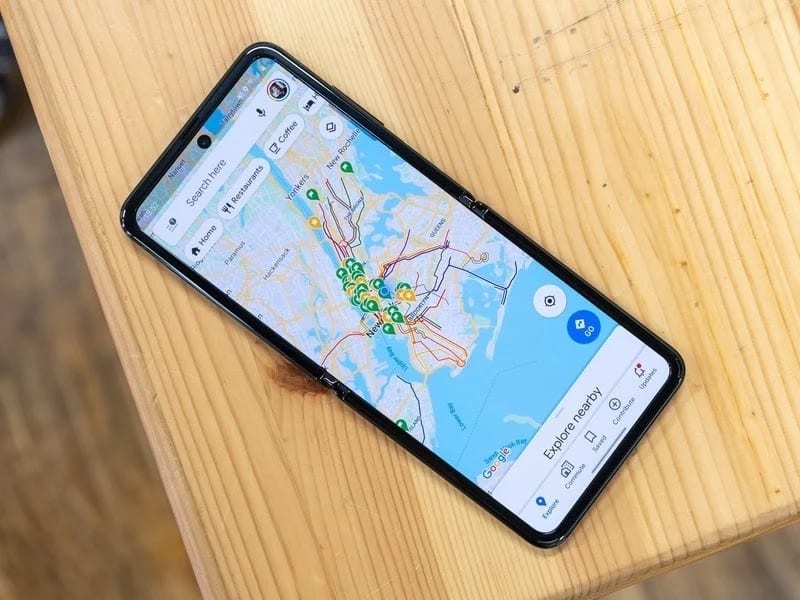
Geolocation apps may bear security and privacy risks, so it is important to mitigate concerns by having, and communicating, valid rationales for how geolocation and tracking capabilities are to be used, and to obtain explicit, specific user consent for each function.
GPS technology is most helpful for tracking the phone (and therefore also the user) using mapping tools. Android and iOS phones may use completely different systems for that, so if your app requires mobile geolocation services, that will be a factor for development.
Geolocation-related APIs are available for Android, iOS, and for platform independent apps. If needed, it is possible to integrate distances, directions, and even local knowledge. Apps that require geolocation services can have a significant impact on battery life, however, so plan carefully about whether these need to run continuously in the foreground or background.
Satellite phones do currently exist, but satellite networks currently operate under proprietary protocols and are prone to congestion because of relatively few voice channels. They are very useful for disaster response and for communications in war zones, but making calls is still costly.
The first experimental 6G satellite, launched by China in November 2020, intends to use Terahertz waves (THz) to provide data rates greater than 100 Gbps for future satellite-based cellular networks.
Conclusion
As the IoT and IoMT develops, an increasing number of proactive connections will be needed. Wearables and other devices provide input to activate processes, deliver active warnings, and even intervene.
NFC and its RFID tags will broaden their role, providing better communications with IT systems. Bluetooth will pull more external device data into networks. Local area WiFi coverage will continue to expand along with cellular service coverage areas. Data analysis is becoming more intelligent, and online cloud systems will process increasingly massive amounts of data.
In this changing context, many companies are driving innovation in the following areas:
- Diagnostic and Monitoring: cardiovascular, pregnancy, neurological, sleep, glucose, physical activity, medical image processing, eSkin
- Therapeutic: Respiratory, insulin, pain management, drug delivery, virtual therapy and connected health
- Injury Prevention and Rehabilitation: Body motion, gait detection, sensing garments, fall detection, exoskeletons
- Administrative: Cybersecurity and malware detection, prioritized data transmission, systems integration, deep learning, algorithm development, records management, MHealth/EHeath/Telehealth
Looking for a partner to help you bridge organizational gaps with a mobile solution? MindSea may be just the team you’re looking for. Lets chat.
